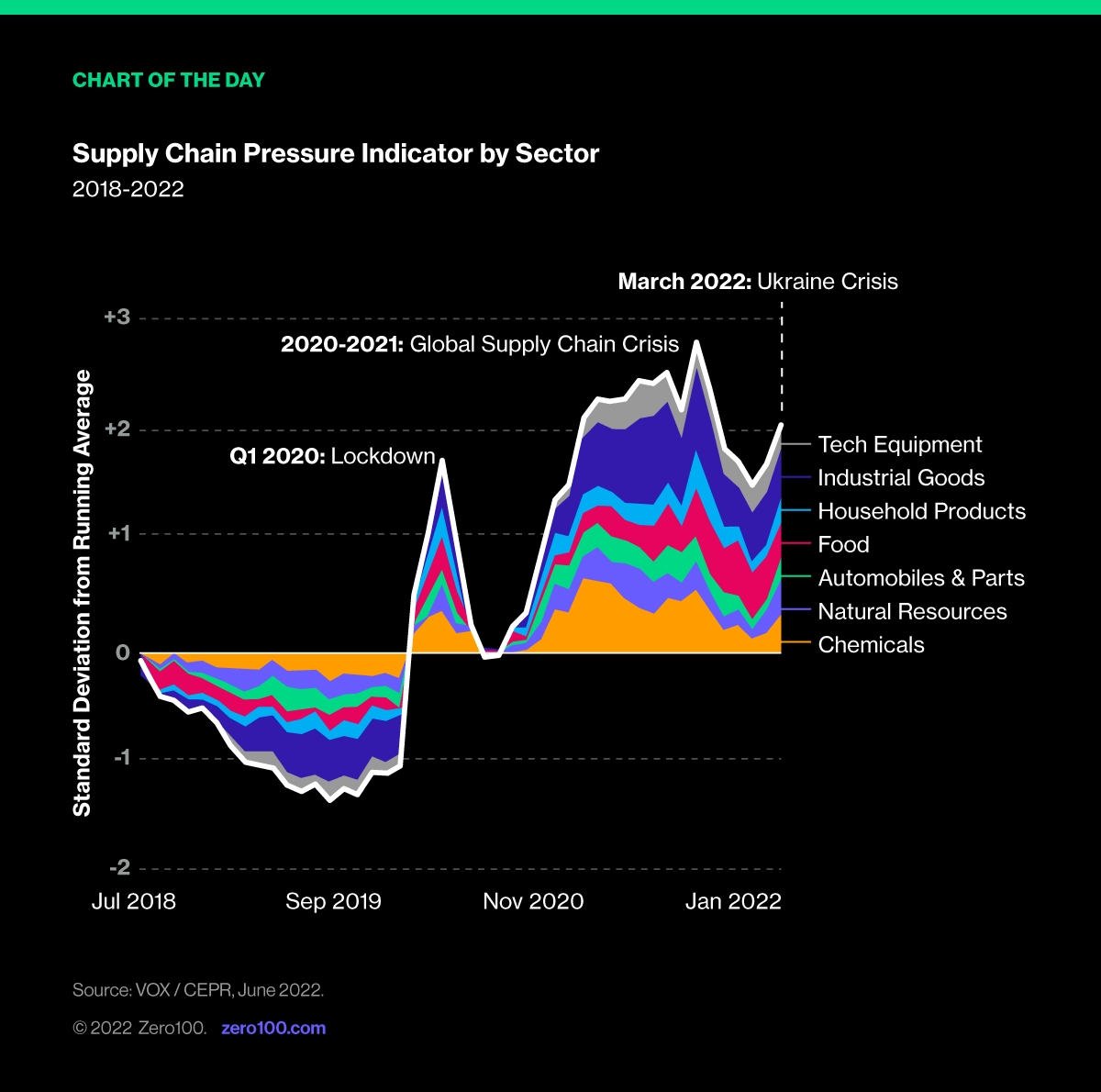
War Footing: A 5-Point Prep Plan for Supply Chain Leaders
With speculation on the timing and location of the next geopolitical flashpoint, Kevin O’Marah unpacks five principles to gauge your level of preparedness to operate amidst growing uncertainty and tension.
This week, David Leonhardt of The New York Times wrote an op-ed flagging the potential for a “New Axis” forming around Russia, China, and Iran, all of whom “stand to benefit when the United States has to cope with multiple international crises at the same time.” It's not idle banter and Nancy Pelosi's Taiwan trip is just the latest in a string of high-tension moments that feel like we're as close to a serious war as we've been in decades.
What should supply chain leaders do to prepare? Consider this set of principles and see if you would be ready:
1. The Customer Is No Longer King
Shortages since COVID started are well-known across industries and customers are getting used to stockouts. For supply chain traditionalists this is sacrilege, but in tight times (i.e., rationing during a war) the imperative shifts from pleasing the customer to optimizing the value of scarce resources.
Expect more demand than you can meet and plan for allocation rules that may be imposed from above (i.e., government or military). Imagine having Tesla's demand backlog and ask how you'd take and manage orders – Elon Musk may be irritating, but customers have consistently demonstrated a willingness to play by his rules.
2. Repair, Refurbish, Reuse Everything
I spoke to the President of a small medical equipment manufacturer this week who described a part he'd been sourcing for years at $10/unit. The current price is $197. His team is struggling with cancellations, grey market price gauging and massive production shortfalls. And yet, business is great because they can still service, repair, and upgrade existing equipment.
If you can't sell new production, maybe you can fix what's already out there. This won't apply everywhere but repair/refurb offers a win-win for your customers and your company profits while also reducing environmental impacts. Audit your service capabilities and see how far you could stretch your customers' and your own operations in a supply crisis.
3. Create Options for Fulfillment
This can be done badly, like the way airlines oversell seats on flights they then cancel – or nicely, like the way Apple encourages customers to pre-order new devices that are expected to be big hits (while forecasting expected availability by channel in real-time). Customers may be willing to buy the right to move to the front of the line when supplies are short, so why not create options to let them do so.
There is plenty of precedent for this including membership fees (Costco, Amazon Prime), loyalty cards (CVS, Kroger) and tiering programs (Delta Airlines, Marriott). Watch out though, because government-mandated rationing may trump your plans if things get really dicey. Either way, supply chain's ability to prioritize orders with intentionality depends on a fulfillment logic that prices the option value of preferred customer status. It can also be a tool to help preempt gray/black markets for your products.
4. Build Solutions, Not Products
Customers don't really want products, they want solutions for jobs they need done. Making and shipping another unit might be impossible if you're short of semiconductors, plastic resin, or avocados. That doesn't mean you can't still solve the customer's problem.
Alternative materials are emerging for some plastics. Manual controls can sometimes replace electronic components, and different ingredients are in development for many food items (e.g., gluten-free wheat substitutes). Think about the attributes in your bills-of-materials (BOM) and source for solutions rather than parts or ingredients.
5. Sandbag Your Way to Stability
The former CEO of Tenneco said to me once that the best advice he'd ever gotten was to "under promise, but over deliver." This familiar nugget of wisdom is essential for supply chain leaders in times of crisis because 30+ years of demand-driven excellence has lulled the world into a false sense of security about supplies of everything from ice cream to insulin.
Stockpiling is wasteful when times are good, but smart when things get bumpy. Even more important though is to manage expectations to keep customers and colleagues alert to the risks you face.
Be Prepared...
Business continuity planning should include even the most horrific scenarios. For supply chain leaders this means thinking practically about how you'd keep going if the United States and European Union were drawn into a full-scale war with Leonhardt's “New Axis.”

Critical Reading
INDUSTRY WEEK
The U.S. National Defense Supply Chain Is in Crisis
Commentary: See this complementary 4-part plan to address public-private partnerships that strengthen and reinforce strategic defense initiatives, including domestic mining capability, unencumbered delivery routes, niche suppliers, and skilled labor shortages.
#usa #defense
BLOOMBERG
Billions of Dollars in Deals Can't Smooth the U.S. EV Supply Chain
Commentary: China's dominance of the global battery supply chain (94% of lithium hydroxide, 70% of lithium carbonate) takes on newfound urgency against the backdrop of rising tensions in the Taiwan Strait.
#china #ev
CNBC
German Chemical Firm Warns of Production Chain Collapse as Putin Squeezes Gas Flows
Commentary: German materials giant Covestro issued a sobering warning on Tuesday, underscoring anticipated gas rationing in Europe as the next complication in the extended supply chain crisis (with up to 25% of production capacity impacted).
#russia #gas